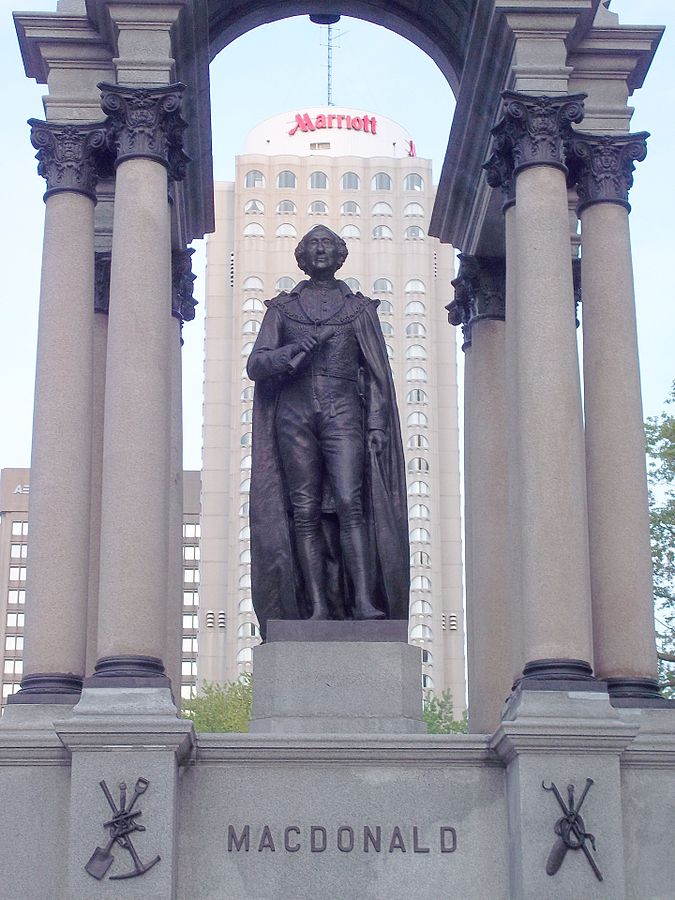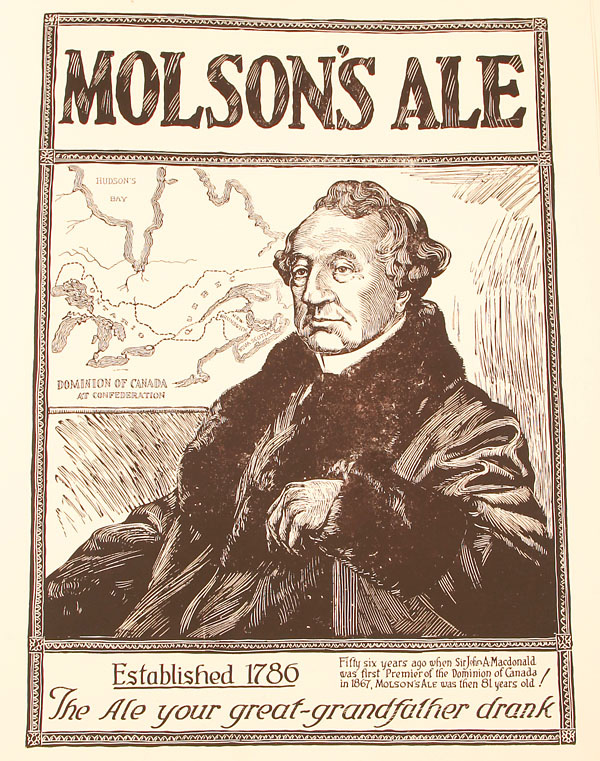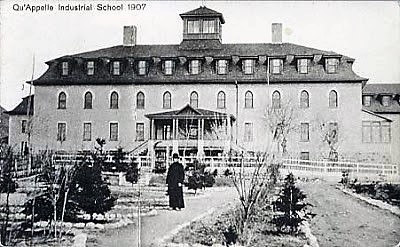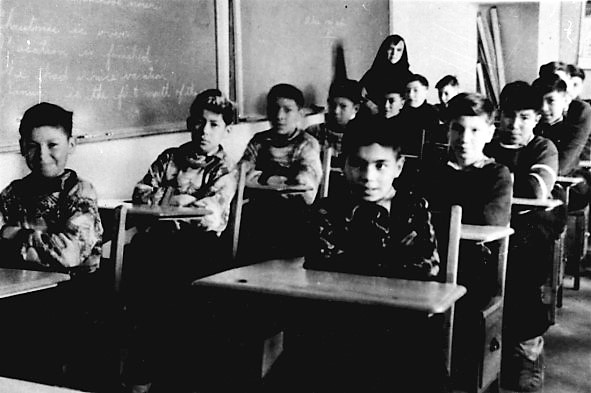Have Canada’s First Nations been generally mistreated in the building of the Canadian nation?
No.
Sir John A. Macdonald in particular has been accused of this. He was, in fact, generally well-disposed towards the Indians.
In earlier days, Macdonald was held in higher regard.
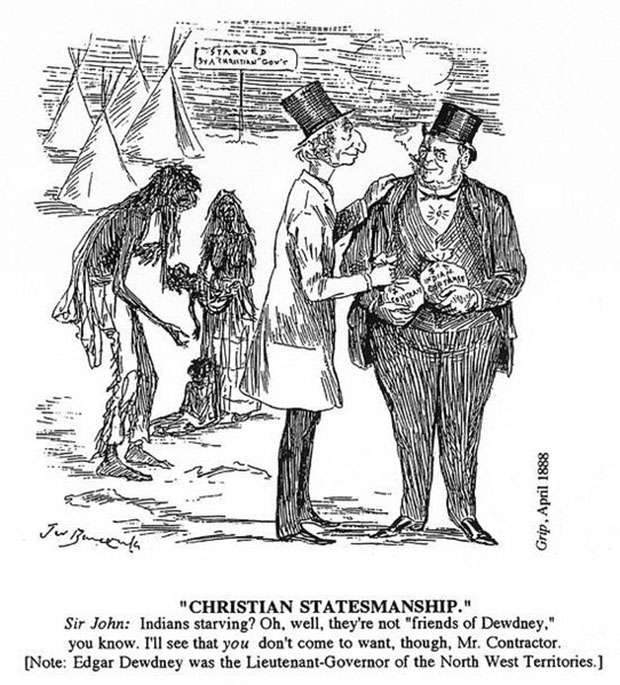
Political corruption may have been involved. In this contemporary cartoon, Macdonald gives money to the Commissioner for Indian Affairs, and the latter pockets it instead of feeding the Indians.
Money supposedly going to Indian welfare really going to bureaucrats and more bureaucracy is a continuing problem.


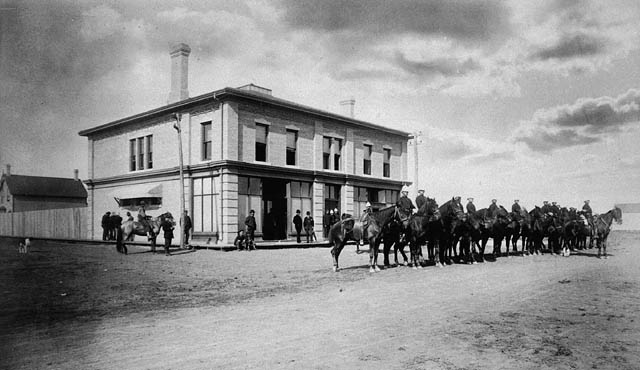




Frog Lake Massacre 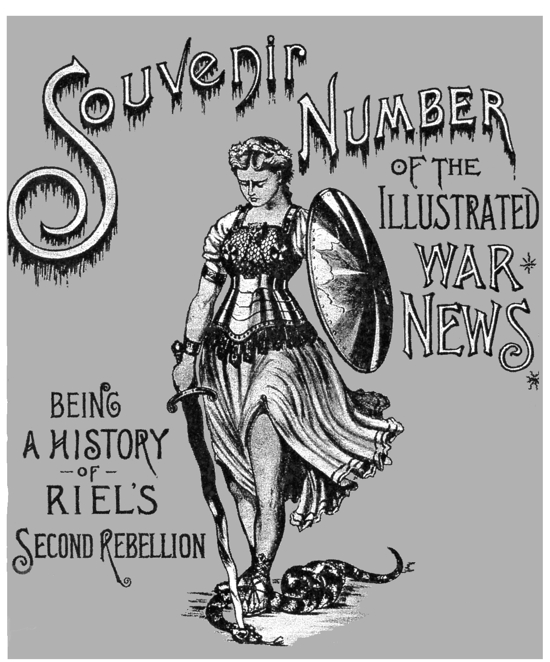

Map of the Batoche battlefield 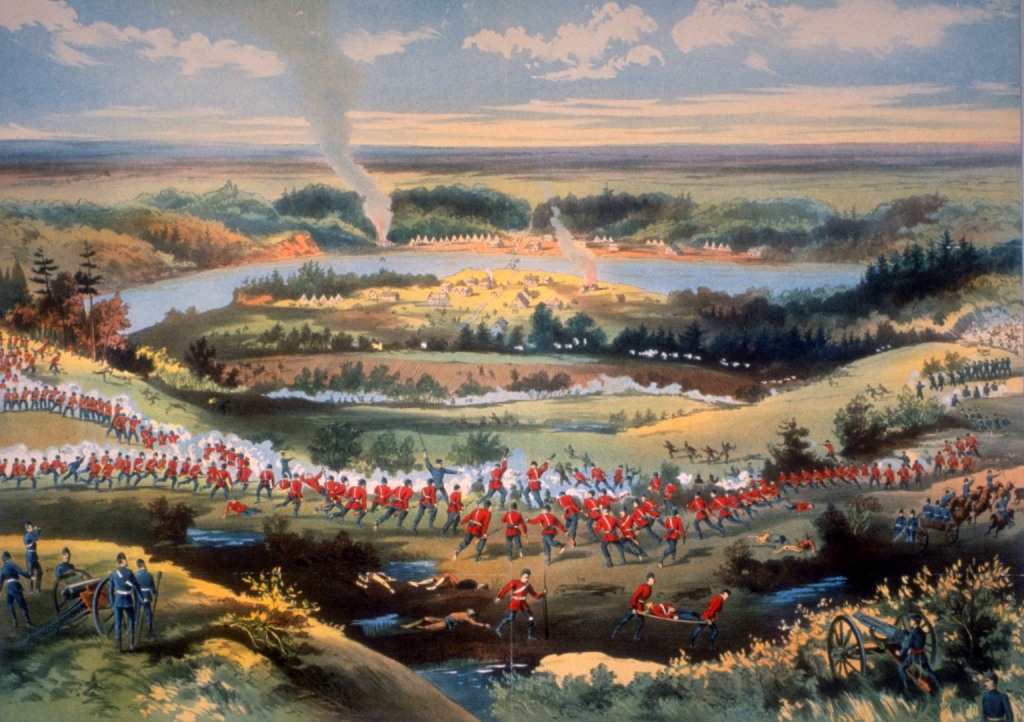
Battle of Batoche 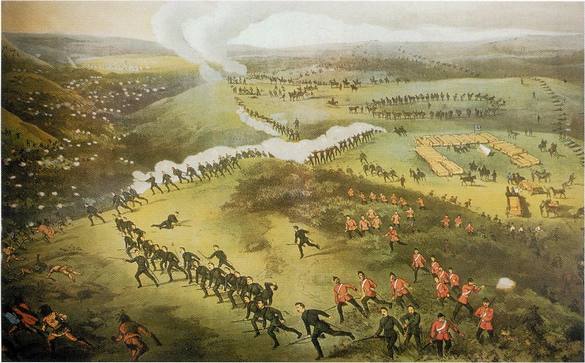
Battle of Cut Knife Hill 
Battle of Fish Creek 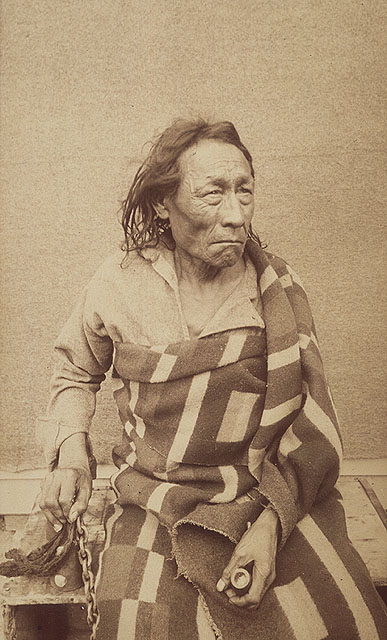
Big Bear 

Gabriel Dumont 
Captured rebels.
This, however, was the natural duty of a national leader faced with an armed rebellion. Moreover, conciliatory approaches had failed: he had declared a general amnesty after the Red River Rebellion, and now the Metis were rebelling again.
While we today are inclined to see it all as a white-aboriginal conflict, it was not necessarily seen this way at the time. In Quebec, it was seen as a Protestant-
Catholic religious and French-English linguistic conflict. And most Metis and most Indians at the time supported the government.


For some years, Indians actually needed written permission, as here, to leave the reserve.
This is an obvious case of segregation, of trying to prevent Indians from integrating into the mainstream. It is also in violation of treaty, which allowed Indians to hunt and forage freely on crown land.
The government’s defense was that the Northwest Rebellion demonstrated the danger of allowing Indians to move freely.
Another charge is that the residential schools funded by the federal government were meant to suppress Indian culture.
But these schools were created in fulfillment of treaty obligations, at Indian request.


